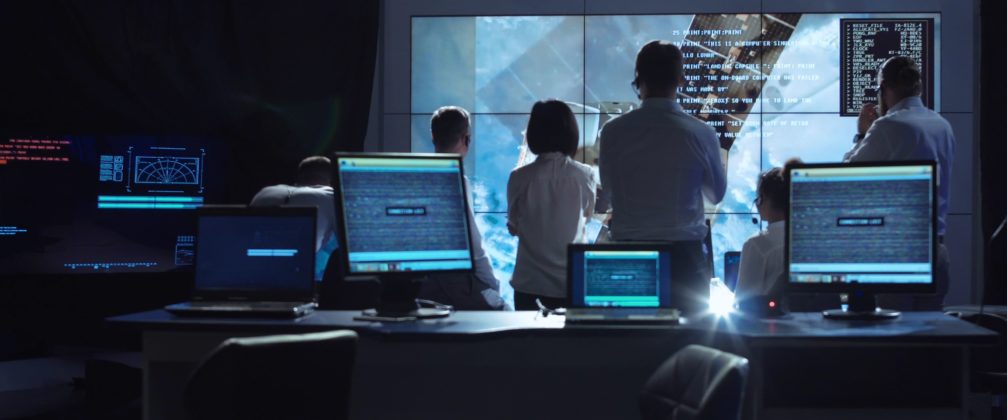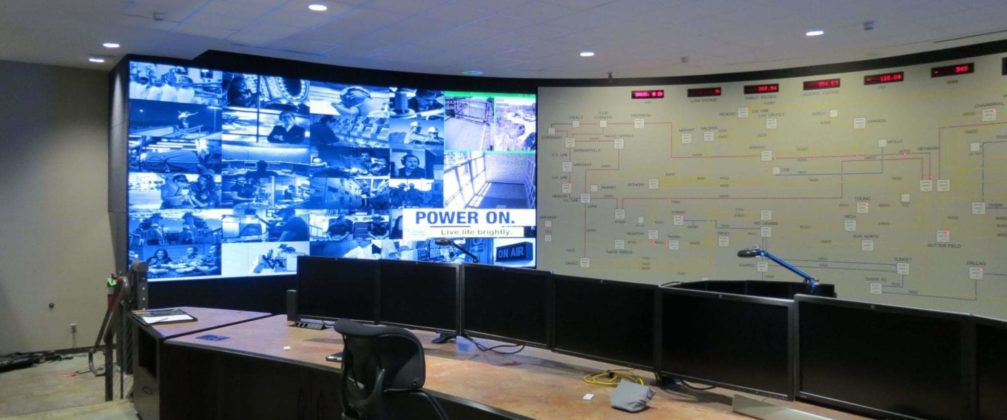Command centers and control rooms are inundated with large quantities of data on a daily basis. To make informed decisions, decision-makers must be able to quickly and accurately interpret this information. The answer: big data visualization. In this blog, we’ll explore big data visualization and how it can benefit organizations that use it. We’ll also take a look at AV-over-IP technology and the vital role it plays in big data visualization.
Big Data Visualization Basics
Before we get into the details of big data visualization, it’s important to define big data. Big data is large, complicated data sets that can’t be processed using paper spreadsheets or tables. Big data sources include everything from traffic cameras and smart devices to social media and security systems. In order to make informed decisions, organizations must be able to handle big data in near real-time.
What is Big Data Visualization?
The best way for organizations to quickly process big data is through big data visualization. Research shows that the human brain excels at recognizing patterns and comprehending images. Big data visualization capitalizes on this by converting raw data into graphical representations. Ultimately, images allow operators to take in and understand large quantities of data in mere seconds.
Most big data visualization software is straightforward enough to be used by anyone in your organization. In some cases, though, you may need to hire specialists. Wondering what big data visualization looks like? Here are a few of the most common formats:
- 2D maps
- 3D models
- Timelines
- Pie charts
- Hierarchical charts
What Are the Benefits of Big Data Visualization?
There are a wide variety of benefits associated with big data visualization. On its own, data has little value. But when it’s visualized, big data helps operators make valuable decisions. Visualization facilitates efficient collaboration across the board, from management to field workers. You’ll find the main benefits of big data visualization below:
- Big data visualization tells stories. By making data easier to interpret, visualization gives operators an end-to-end view of the situation.
- Big data visualization identifies trends. It can be difficult for organizations to see trends in their data, especially if that data comes from a wide variety of sources. Spotting trends in advance gives organizations opportunities that can help them prepare for the future.
- Big data visualization facilitates immediate communication. Rather than distributing written materials, visualization allows everyone in the room to quickly grasp data-based insights.
What Should You Look for When Buying Big Data Visualization Software?
You have a lot of options when it comes to real-time data display software. Here are a handful of the most important features to look for when selecting software for your organization. Your software should:
- Offer a customizable dashboard that’s both concise and visually appealing.
- Be able to process multiple types of incoming data and connect to other software when receiving data.
- Be embeddable so you can easily add visual reports to your other applications.
- Offer interactive reporting that allows you to tell a story and investigate trends.
- Allow you to perform data mining in order to identify the most important trends in your largest data sets.
If you’re interested in learning more about big data visualization software, check out this blog on some of the most popular brands.
Which Industries Can Benefit from Big Data Visualization?
Nearly every industry can benefit from big data visualization and the insights it provides. These industries include:
- Utilities
- Transportation
- Public Safety
- AV and Entertainment
- Defense, Security, and Military
- Medical
- Process Control
- Enterprise
- Education
- Financial Trading
What Role Does AV-Over-IP Play in Big Data Visualization?
AV-over-IP (audio-visual over Internet protocol) is becoming increasingly popular in the world of big data visualization. But what is AV-over-IP (also known as AV/IP)? Put simply, AV/IP is the transmission of audio-visual information via a network cable infrastructure, such as a LAN (local area network) or IP address.
In the past, most organizations used analog AV equipment to communicate and display data. AV/IP uses some of the same network equipment, but there’s less cabling and more source flexibility. In fact, AV/IP allows video walls to display images from sources all over the world. While traditional AV is preferable for small systems, an IP-based video wall controller is best for larger organizations.
How Does AV-Over-IP Work?
Let’s take a closer look at the ins and outs of AV-over IP. The first step is placing an encoder at each source device and a decoder at each destination device. The encoders and decoders are all connected via Ethernet switches. AV/IP allows organizations to connect as many encoders and decoders as their network can accommodate.
What Are the Benefits of AV-Over-IP?
In the past, AV systems involved transmitters, receivers, and matrix switches. Any AV signals were confined within the room. But with AV/IP, transmitters become encoders and receivers become decoders. Individual AV matrix switches are replaced with an IP switch that uses the standard Internet infrastructure to transport information worldwide.
Here are a few other benefits of choosing an AV-over-IP solution for your organization:
- Switching is infinitely scalable because the number of data sources isn’t limited by the number of physical ports on an AV device.
- There’s enhanced security because AV/IP can be deployed on separate, unrelated networks that aren’t associated with your existing infrastructure.
- Enhanced video processing options means video quality is better than ever. It’s also more comprehensive since you can receive video from any geographic location.


